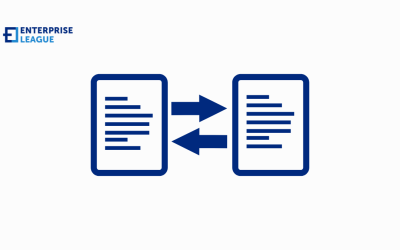Task automation is automating repetitive tasks to increase productivity and efficiency. Its goal is to reduce the time spent on these tasks and improve quality by ensuring consistency across multiple processes.
For example, your employees can create a workflow instead of manually creating new procedures whenever needed. With automation, they can streamline the process by simply dragging and dropping files into a folder on your computer or online repository.
Consequently, this will save them from manually going through all the steps required to complete the task.
4 steps to ensure flawless task automation
Identify tasks for automation
For instance, automate tasks like data entering, calendar management, or reports and analytics. Once you identify functions suitable for automation, you’ll find it easier to choose a solution to help your team with their workflows.
Create a detailed plan
Once you’ve identified the tasks that need to be automated, develop a detailed plan on how to automate them. This will help you decide whether or not it’s worth automating and how best to do so. It also helps to consider if legal or ethical issues might arise from using an automation tool for a specific task.
As you create this task automation plan, you may find that some tasks are better suited for automation than others. For example, depending on their complexity, it may make sense to use an app or software program before automating specific tasks. This way, you won’t waste time developing complicated programs that don’t work in real-life situations.
Look for automation tools
Once a plan is outlined, it’s time to look for automation tools to help simplify them. These tools are designed to streamline business processes by reducing manual steps and repetitive tasks. Hence, employees can focus more on their core responsibilities.
For instance, investing in tools like resource management software allows you to manage the allocation of equipment and human resources efficiently. In addition, this tool makes it easier for line managers to assign projects to their teams without worrying about overloading them with work or underutilizing their skill sets.
On the other hand, you can also consider using cloud-based services as they provide remote access to data. These services allow users to store files on a central server instead of holding them locally on computers or devices. This way, remote employees can access all their files quickly without worrying about losing them due to viruses or hardware failure.
Develop task automation strategies
Significantly, this step will help them feel more comfortable handling solutions since they already know how it works and what they need to accomplish. Here are three of the common strategies for implementing task automation:
- Pilot testing: Testing new software or technology before rolling it out company-wide provides many benefits. For one, pilot testing allows you to avoid making significant mistakes while rolling out new technologies or software. It also allows you to see how users react to the new system and find ways to improve their performance.
- User acceptance testing (UAT): UAT is another strategy to consider when implementing task automation. This process refers to an evaluation period where a user tests a system by completing various tasks using a particular software or technology before releasing it for company use. This way, you won’t have to worry about losing data or experiencing productivity losses due to human errors or software defects.
- Training employees on new systems: This strategy works great if your company uses a newer type of software that requires less employee effort and more from machines through automating tasks. Training your employees to use new systems allows them to perform their duties efficiently and improve their productivity.
It’s essential to test your new automation tools to minimize downtime during implementation. Hence, you may choose one or two task automation strategies to ensure your tools work effectively.
Conclusion
With the rise of modern technologies, it’s best to take advantage of the latest tools to streamline tasks within your company. Therefore, considering these four steps can help you adopt task automation quickly.
Once you do so, you can sustain uptime, enabling your staff to deliver your clients’ needs effectively. This way, you can boost your revenue, which gives you a competitive edge.
More must-read stories from Enterprise League:
- The golden rules you need to build a steady buyer-seller relationship.
- Everything you need to know about how to onboard a new employee.
-
Kick start your business by choosing the best business location based on these 9 factors.
- Learn about all the tips and apps you need to successfully manage a remote team.
- Learn how practising gratitude can help your business grow.
Related Articles
PDFs and the debate between tradition and innovation
Curious about the future of PDF? Learn about its integration with new technologies and explore some practical PDF tips to leverage all the power of this format!
The 10 Ds of entrepreneurship: Why are they important?
Are you familiar with the 10 Ds of entrepreneurship? Let’s see if you possess some or all of them that will launch you for success.
Optimizing performance and reliability in managed file transfer systems
Optimizing the performance and reliability of MFT systems is a continuous process that requires attention to infrastructure, software and strategic processes.
PDFs and the debate between tradition and innovation
Curious about the future of PDF? Learn about its integration with new technologies and explore some practical PDF tips to leverage all the power of this format!
The 10 Ds of entrepreneurship: Why are they important?
Are you familiar with the 10 Ds of entrepreneurship? Let’s see if you possess some or all of them that will launch you for success.






